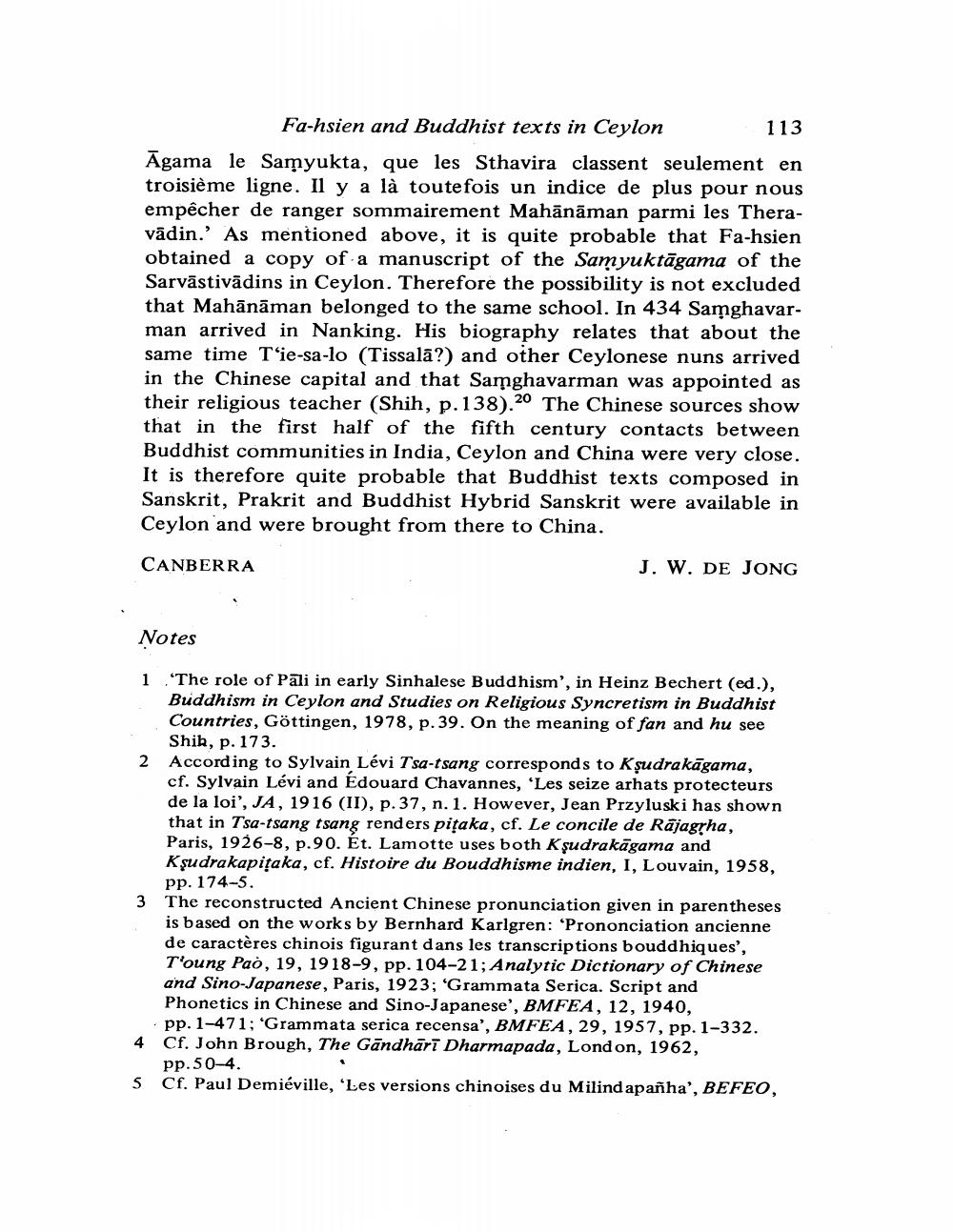________________ Fa-hsien and Buddhist texts in Ceylon 113 Agama le Samyukta, que les Sthavira classent seulement en troisieme ligne. Il y a la toutefois un indice de plus pour nous empecher de ranger sommairement Mahanaman parmi les Theravadin.' As mentioned above, it is quite probable that Fa-hsien obtained a copy of a manuscript of the Samyuktagama of the Sarvastivadins in Ceylon. Therefore the possibility is not excluded that Mahanaman belonged to the same school. In 434 Samghavarman arrived in Nanking. His biography relates that about the same time T'ie-sa-lo (Tissala?) and other Ceylonese nuns arrived in the Chinese capital and that Samghavarman was appointed as their religious teacher (Shih, p. 138).20 The Chinese sources show that in the first half of the fifth century contacts between Buddhist communities in India, Ceylon and China were very close. It is therefore quite probable that Buddhist texts composed in Sanskrit, Prakrit and Buddhist Hybrid Sanskrit were available in Ceylon and were brought from there to China. CANBERRA J. W. DE JONG Notes 1 'The role of Pali in early Sinhalese Buddhism', in Heinz Bechert (ed.), Buddhism in Ceylon and Studies on Religious Syncretism in Buddhist Countries, Gottingen, 1978, p.39. On the meaning of fan and hu see Shih, p. 173. According to Sylvain Levi Tsa-tsang corresponds to Ksudrakagama, cf. Sylvain Levi and Edouard Chavannes, 'Les seize arhats protecteurs de la loi', JA, 1916 (II), p. 37, n. 1. However, Jean Przyluski has shown that in Tsa-tsang tsang renders pitaka, cf. Le concile de Rajagrha, Paris, 1926-8, p.90. Et. Lamotte uses both Ksudrakagama and Ksudrakapitaka, cf. Histoire du Bouddhisme indien, I, Louvain, 1958, pp. 174-5. 3 The reconstructed Ancient Chinese pronunciation given in parentheses is based on the works by Bernhard Karlgren: 'Prononciation ancienne de caracteres chinois figurant dans les transcriptions bouddhiques', T'oung Pao, 19, 1918-9, pp. 104-21; Analytic Dictionary of Chinese and Sino-Japanese, Paris, 1923; 'Grammata Serica. Script and Phonetics in Chinese and Sino-Japanese', BMFEA, 12, 1940, pp. 1-471; 'Grammata serica recensa', BMFEA, 29, 1957, pp. 1-332. 4 Cf. John Brough, The Gandhari Dharmapada, London, 1962, pp.50-4. 5 Cf. Paul Demieville, 'Les versions chinoises du Milind apanha', BEFEO,




